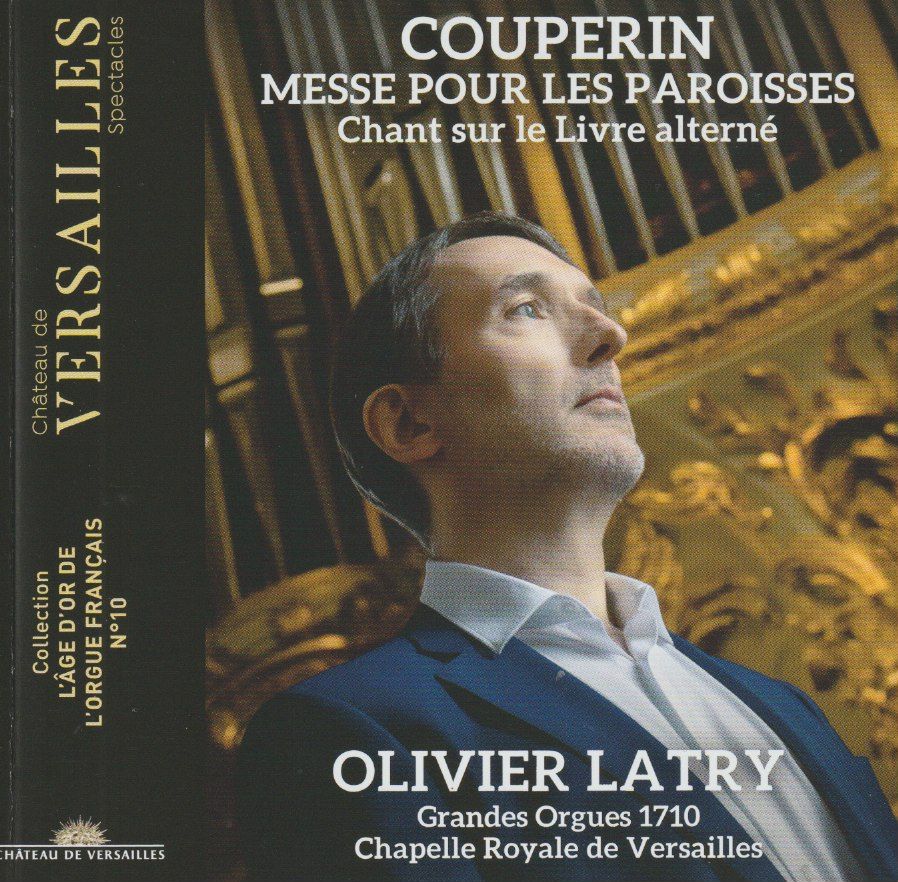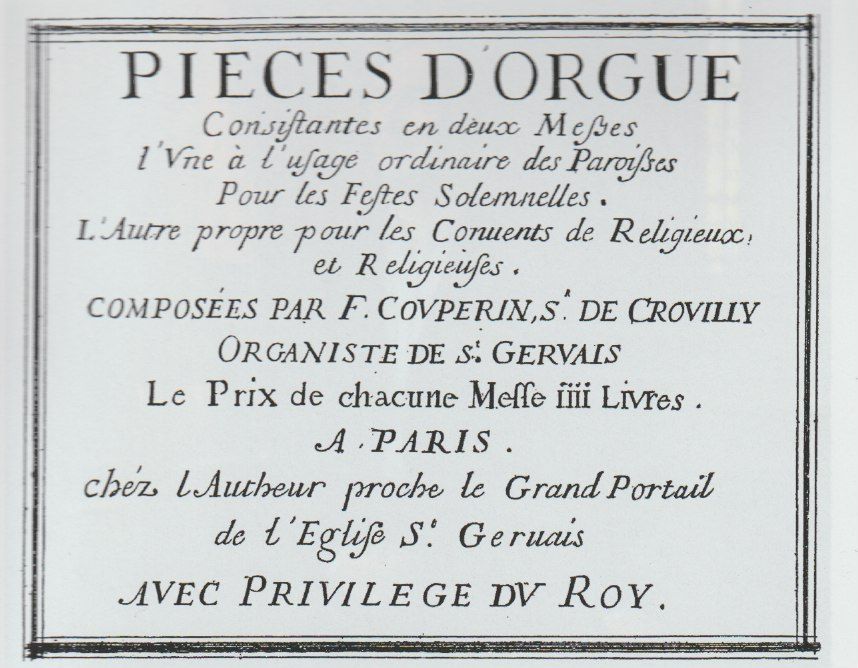Olivier Latry plays François Couperin: Messe pour les Paroisses (1690)

François Couperin (1668-1733) was only in his early twenties when the Messe à l’usage des Parcisses pour les Fêtes Solemnelles (Solemn Mass for the Parishes) was published in 1690.
The piece is based on the idea of alternating organ music with sung text within the context of a liturgical service, Couperin creates a magnificent organ panoply - and who better to perform it that one of the World's finest organists, Olivier Latry.
Here is the title page of Couperin’s seminal piece:

Couperin’s work sits on the cusp of a new style, following on from composers such as Nivers, Lebègue, de Grigny and Raison, and offering a new way forwards. For this recording, for the organ pieces, Latry often uses the fingerings of the old style, allowing for flexibility and fluency of line.
The organ mass offers interesting challenges: for example, Frescobaldi in his Messa Della Domenica (Fiori Musicali, 1735) offers twelve organ verses for the Kyrie (liturgical usage only asks for five); and so does one play in that instance all 12 for completion's sake, or select five? Here's Francesco Cera, playing the Giovanni Guglielmi 1612 organ in the church of Santa Maria in Vallicella, Rome, with the Ensemble Arte Musica directed by Andres Montilla-Acurero in one realisation (issued on an Arcana disc that might be tricky to find in physical form these days):
In the 1970s, organists began inserting sung verses for context in organ masses (as we have here, superbly done). In France, it is tradition to add voices while singing the plainchant, and that is exactly what we have here (the tradition is 'chant sur le livre,' or singing on the Book. If you want one example of how this can attain the highest beauty, try track 20 of the current disc, a “Qui tollos” for two voices (with the tenor giving the plainchant itself); it leads into a meditiative Tierce en Taille the “Qui Tollis’ for the organ.
The alternation of organ and vocal music results in a beautiful tapestry - the vocal parts ( the “Chant sur le Livre alterné”) are performed here by three sopranos (Clémence Carry, Marthe Davost and Jeanna Lefort), a tenor (Cyril Escoffier) and two baritones (Marc Mouillon and Jean-Marc Vié, directed by Jean-Yves Haymoz).
Here is the promotional video from Versailles:
Couperin's organ writing is spectacularly assured. Listen to this “Dialogue,” and here we are able to offer Latry in an alternaive performance at the Journées Musicales d'Automne de Souvigny on a 1783 Cliquot organ:
Try also the organ “Quoniam” (“Dialogue sur la Voix humaine”), an example of some remarkable counterpoint - and a remarkable realisation. Latry never loses the pulse of the music he plays, which gives his interpretations real focus and integrity. His take of the extended organ “Offertoire” (over nine minutes in length) is utterly superb and a great eample of how that secure rhythmic foundation pays huge dividends (prefaced by the most amazingly virtuoso 'Amen' of the Glroria, a 'Dialogue sur des Grands jeux'.
This disc demands to be listened to in one sitting; the experience of the whole is so much more than the sum of its constituent parts; and Latry is the ideal guide, complemented by those beautiful vocal moments. He plays, of course, on the beautiful Grandes Orgues 1710 of the Chapelle Royale de Versailles.
As an alternative (and to hear organ playing of a different era), click here for the great Wolfgang Rübsam in 1977.
